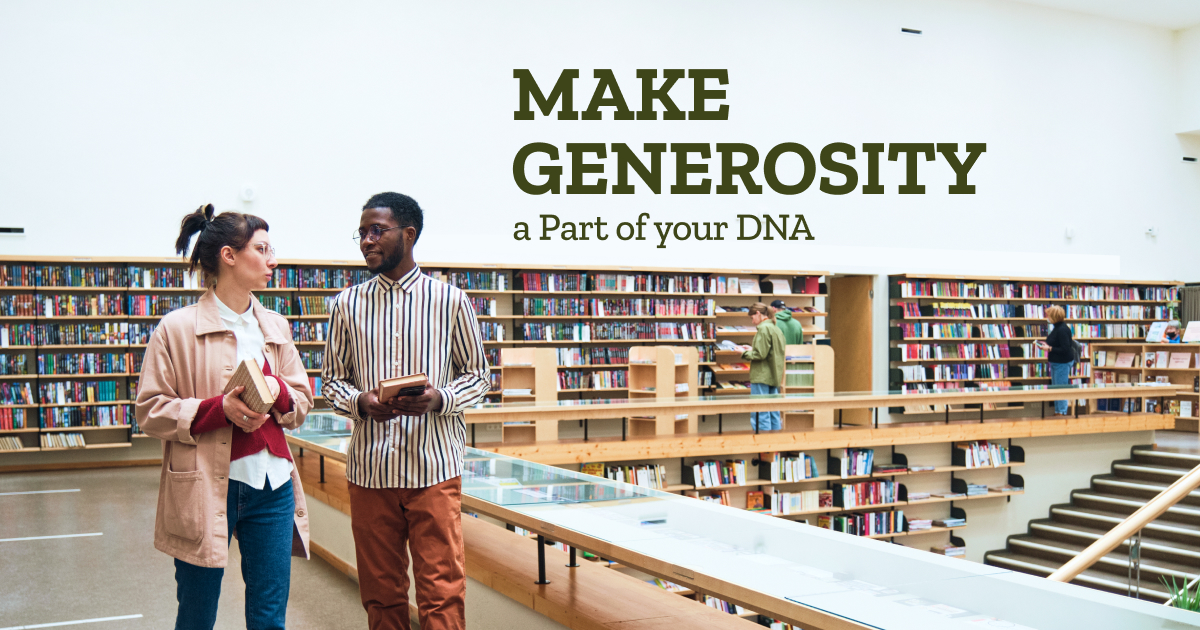A culture of generosity is not pre-programmed. It must be learned and continually reinforced.
For those willing to devote the time and resources into creating a culture of generosity (and nurturing, sustaining, and continually reinvesting in this culture!)—the returns can be transformational.
Consider what a “culture of generosity” can look like for universities, colleges, and institutions of higher education. It can help to inspire truly generation-defining gifts: Ruth Gottesman’s recent $1 billion donation to the Albert Einstein College of Medicine, for example, which will ensure free tuition for students[1]. Or it can manifest in smaller, everyday ways: a student-backed fundraising event that embraces peer-to-peer fundraising, builds a pipeline of smaller gifts for a cause, and instills a sense of generosity in students early on. In both scenarios, a culture of generosity supports long-term fundraising stability and success: an increasingly important consideration as sectors such as higher education face headwinds.
So, how can you develop a culture of generosity that inspires gifts of all sizes? Here are some critical aspects to consider.
Start with the board.
Recruit trustees who are willing to support the university philanthropically, and who elevate the role of philanthropy in university strategy. When board members recognize the importance of philanthropy, for example, they are more likely to recruit a president who makes philanthropy a priority. Infusing philanthropy throughout your institution starts with leadership.
Engage your volunteers.
Don’t be afraid to recruit a large volunteer corps. There are many ways to engage volunteers: campaign committee chairs, class agents, reunion planning committee members, career mentors, and young alumni affinity group members can be important and meaningful roles. But—at the same time—be intentional in ensuring that every person has a clear role, and each committee has well-defined responsibilities. An underutilized volunteer group can quickly grow disillusioned. Thank your volunteers for their contributions of work, wealth, wisdom, and wit, and personalize their experiences to make them more rewarding for everyone.
Infuse generosity throughout the student and alumni lifecycle.
How can you communicate the impact of philanthropy from the first moment a prospective student engages with the school?
Incorporate philanthropy into recruitment materials and the admissions process. Equip student admissions tour guides to talk about and show interested families how philanthropy fuels the student experience on campus. Demonstrate that generosity is a lived value.
How can you celebrate philanthropy and provide resources for students to give back more effectively?
We know that a positive college experience is not the strongest indicator of whether someone will give back to their alma mater. In fact, exposure to patterns of pro-social activities (e.g., religious organizations, high school activities, volunteer efforts, etc.) is a stronger predictor of whether alumni will volunteer after college.[2] Encourage students to take part in philanthropy. Expose students to opportunities to give back to the college as early as freshman year. Help students organize and participate in formal fundraising events, volunteer with local nonprofits, or donate to the club soccer team for their trip to the championship.
How can you inspire alumni to give back?
Alumni are your tried-and-true donor base. But how you engage with them matters.
- Ask for feedback, listen, and respond accordingly! Communicate with alumni how they want and about the subjects that are of interest. Segment your communications based on college interests and involvement.
- Instead of just asking for a gift, provide meaningful opportunities to foster connections with current students, faculty and staff, and other alumni. Our client, Kenyon College, selected April 30 as their giving day in 2022 and recruited volunteers to host alumni events across the country. Why? Because the date is the same as their zip code (43022)! Alumni loved it.
- Be patient—average giving relationships can span more than three decades.[3]
Embrace faculty and staff as donors and advocates.
The advancement team should not travel this road alone. Work to plant the seeds for a flourishing culture of generosity across all departments. Include deans in strategy meetings. Identify faculty advocates and build a relationship with them to hear about the impact of philanthropy on their work. Ensure strong alignment between finance and advancement–offer cross-departmental trainings and regular meetings to facilitate productive work toward common goals. Equip department chairs and athletics coaches with language and materials to talk about philanthropy. And, after you have given to the school yourself, remember to ask your peers to give!
As you consider this investment, I’ll leave you with the following:
To go fast, go alone. To go far, go together.
Let’s embrace the spirit of moving forward together.
[1] https://www.nytimes.com/2024/02/26/nyregion/albert-einstein-college-medicine-bronx-donation.html
[2] https://www.case.org/resources/issues/september-october-2021/natural-instincts





